Are you tired of being tied to your pedalboard and amp? Want to free yourself from the hassles of long cables? Then check out our Best Wireless Guitar System recommendations.
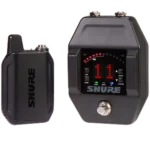
Shure GLX-D16+
The GLX-D16+ is a reliable wireless system specially designed for guitarists, with a stompbox-style receiver.
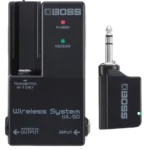
Boss WL-50
The Boss WL-50 integrates seamlessly with pedalboards thanks to its compact size, long battery life, and high-quality audio transmission.
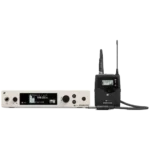
Sennheiser EW 500 G4-Ci1-AW+
The Sennheiser EW 500 G4-Ci1-AW+ is a high-fidelity wireless guitar system with rock-solid reliability and a long-range, making it a great choice for professional guitarists.
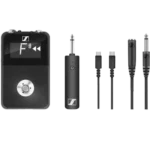
Sennheiser XSW-D
The Sennheiser XSW-D is a compact pedalboard-friendly wireless system that is easy to use, has good range, and integrates well with existing setups.
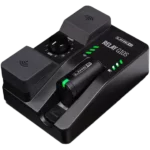
Line 6 Relay G10S
Line 6's Relay G10S is a compact and affordable hassle-free wireless system for guitarists who want a 24-bit digital audio quality.
We’re reader-supported. When you click product links on our site, we may earn an affiliate commission at no extra cost to you.
The signal stability and overall reliability of wireless guitar systems have improved substantially. So much so that most professional musicians now tour with sophisticated wireless systems.
But you don’t have to be a big-name artist to play untethered. You can now choose from many wireless systems that fit most gig setups and budgets.
To help you choose, we’ve featured the cream of the crop among the digital and analog wireless systems available.
Our recommendations are picked from a wide price range to better cover different budgets and performance preferences.
Detailed Reviews of the Best Wireless Guitar Systems
Shure GLX-D16+ Digital Guitar Pedal Wireless System
Best Multi Effect Pedal (Overall)
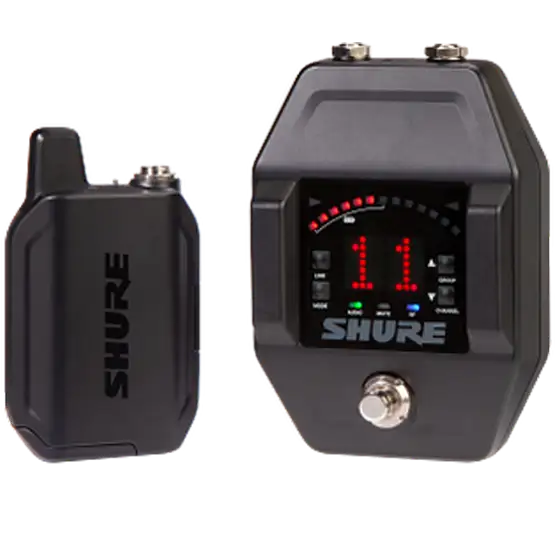
Shure GLX-D16+ Digital Guitar Pedal Wireless System
Guitarsite Expert Opinion
The GLX-D16+ is a high quality wireless system specially designed for guitarists, with a stompbox-style receiver.
Like its predecessor, it is highly rated for its impressive signal stability, reliability, and fidelity.
Manufacturer: Shure
We’re reader-supported. When you click product links on our site, we may earn an affiliate commission at no extra cost to you.
Big-name wireless systems maker Shure will not sit by while guitar manufacturers like Line 6 overtake them.
With famous artists like Maroon 5, Alice Cooper, and Fallout Boy endorsing their products, Shure continues to stake their claim in the guitar wireless systems market.
The GLX-D16+ is a digital wireless system specially designed for electric guitar players. It has a receiver that resembles a stompbox.
This wireless guitar system uses Shure’s Dual Band digital wireless technology to operate in both the standard 2.4GHz and 5.8GHz bands. The GLX-D+ system constantly scans both frequency bands and selects multiple backup frequencies to ensure uninterrupted performance.
If there’s any interference, the system switches to a backup frequency without interrupting your playing. This means you’ll never have to worry about losing your signal.
This means you will get the same clarity as you move around within its 200-foot range of operation. The bodypack also has a rechargeable lithium-ion battery, while the pedal receiver has a built-in tuner.
While I would have liked it better if the price was lower, the Shure GLX-D16+’s features and reliability more than makeup for the cost. It also helps that this wireless system looks nice, making it the favorite of many of today’s touring artists, including many who do not officially endorse the product.
Pros:
- Highly rated in the market thanks to its impressive signal stability, reliability, and fidelity.
Cons:
- The cable included with the body pack isn't as sturdy as I'd like it to be.
Transmitter: GLXD1+ | |
|---|---|
Battery: 3.7V Rechargeable Lithium-Ion (Up to 12 Hours)
| Guitar Cable: TA4M
|
Dimensions: 4.5″ (h) x 2.6″ (w) x 1.1″ (d)
| Weight: 0.33 lbs. |
Receiver: GLXD6+ | |
|---|---|
Antenna: Fixed
| Operating Range: Up to 200 ft. Line-of-sight
|
Frequency Range: 2.4 GHz, 5.8 GHz
| Frequency Response: 20Hz-20kHz
|
Output: 2 x 1/4″
| Dimensions: 1.89″ x 3.7″ x 5.4″
|
Weight: 1.23 lbs. | |
Boss WL-50 Wireless System
Best User-Friendly
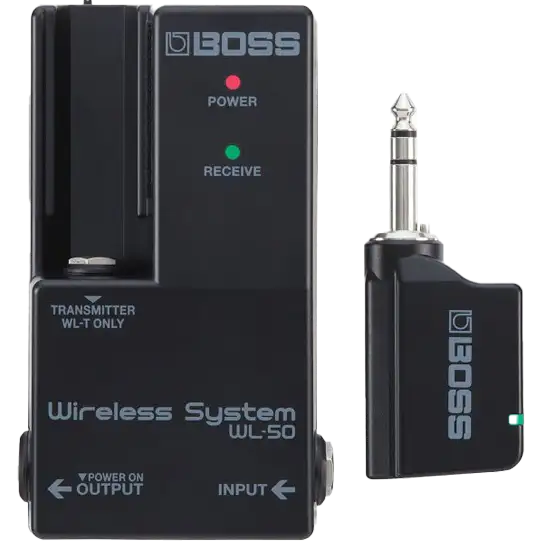
Boss WL-50 Wireless System
Guitarsite Expert Opinion
BOSS is a trusted name in guitar effects for decades, and its penchant for quality and reliability is on full display with the WL-50 wireless system for guitarists. It features a compact, pedalboard-friendly design, long battery life, and guitar-friendly clarity and signal integrity.
Manufacturer: Boss
We’re reader-supported. When you click product links on our site, we may earn an affiliate commission at no extra cost to you.
The WL-50 wireless system is designed to give you a reliable and liberating wireless guitar playing experience.
It is designed to seamlessly integrate with pedalboards, sporting a profile that is roughly the same size as a standard Boss stompbox.
Coming from Boss, you know that this system is tank tough, and road worthy. And it does all this while keeping the size and weight manageable. Furthermore, the system boasts an impressive battery life of up to 7 hours on a single charge, eliminating worries about mid-performance dropouts.
The WL-50 transmits high-fidelity audio with low latency at just 2.3 milliseconds. This ensures your playing remains responsive and feels natural while retaining your guitar’s nuance and sonic details.
Additionally, the included cable tone simulation replicates the subtle tonal variations introduced by a standard guitar cable, a useful feature for those who feel wireless systems sound too clear and bright. This makes it perfect for electric guitars with single coil passive pickups.
This guitar wireless system connects reliably via the 2.4GHz frequency. However, it is possible to experience connection quality drops when positioned near powerful wireless devices that operate at the same frequency.
This is the best wireless guitar system to get if you’re looking for a reliable wireless system that can seamlessly integrate into your pedalboard setup.
Pros:
- Tank tough quality, reliable, easily integrates into pedalboards.
Cons:
- Limited to 2.4GHz connectivity
Transmitter: Boss WL-T 6.3mm (1/4”) Transmitter | |
|---|---|
Battery: Rechargeable Lithium Ion Batteries (Up to 12 Hours)
| Guitar Cable: Bug-Type and Extension cable 6.3mm (1/4”)
|
Dimensions: 3.43″ x 0.87″ x 1.43″
| Weight: Not Specified. |
Receiver: Boss WL-50 Pedalboard Receiver | |
|---|---|
Antenna: Internal
| Operating Range: 65 ft. Line-of-Sight
|
Frequency Range: 2.4 GHz
| Frequency Response: 20Hz-20kHz
|
Rackmount Version: N/A
| Output: 1 x 1/4″
|
Dimensions: 2.87″ x 4.81″ x 2.25″
| Weight: 0.5 lbs. |
Sennheiser EW 500 G4-Ci1-AW+
Best Multi Effect Pedal (Overall)
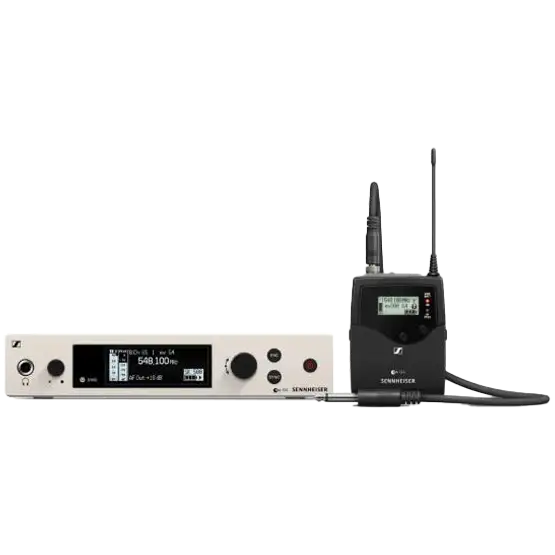
Sennheiser EW 500 G4-Ci1-AW+
Guitarsite Expert Opinion
While some systems prioritize affordability, the Sennheiser EW 500 G4, focuses on high-fidelity audio transmission with extended range and robust interference management.
Manufacturer: Sennheiser
We’re reader-supported. When you click product links on our site, we may earn an affiliate commission at no extra cost to you.
This system boasts a wide operating range of 330 feet (line of sight) and a selection of 3,520 frequencies to minimize the chance of encountering signal interference. It also works consistently well for up to 8 hours with a pair of new AA batteries.
This device has a long operation range, which is perfect for guitarists who like to move a lot while performing.
Beyond its core functionality, the system includes a built-in 5-band EQ for personalized sound shaping and a cable emulation mode to replicate the subtle tonal characteristics of a traditional guitar cable.
For added convenience, a soundcheck mode facilitates quick and easy level adjustments.
My only gripe with this wireless system is its price, which is beyond the average budget of guitarists.
But if you can invest in a good quality wireless system, this is highly recommended.
Pros:
- State-of-the-art audio quality and easy setup. Wide 330 feet connectivity range
Cons:
- Requires quite an investment
Transmitter: SK 500 G4 Bodypack | |
|---|---|
Battery: 2 x AA (Up to 8 Hours)
| Guitar Cable: Ci1 to 1/4″
|
Dimensions:3.32″ x 2.57″ x 1.22″
| Weight: 0.35 lbs |
Receiver: EM 500 G4 Half-Rack | |
|---|---|
Antenna: 2 x Detachable
| Operating Range: 330 ft. Line-of-Sight
|
Frequency Range: 470-558 MHz (AW+ band)
| Frequency Response:25Hz-18kHz
|
Rackmount Version: N/A
| Output: 1 x XLR, 1 x 1/4″, 1 x Ethernet
|
Dimensions: 8.35″ x 1.7″ x 6.61″
| Weight: 2.16 lbs |
Sennheiser XSW-D Wireless Guitar System
Best User-Friendly
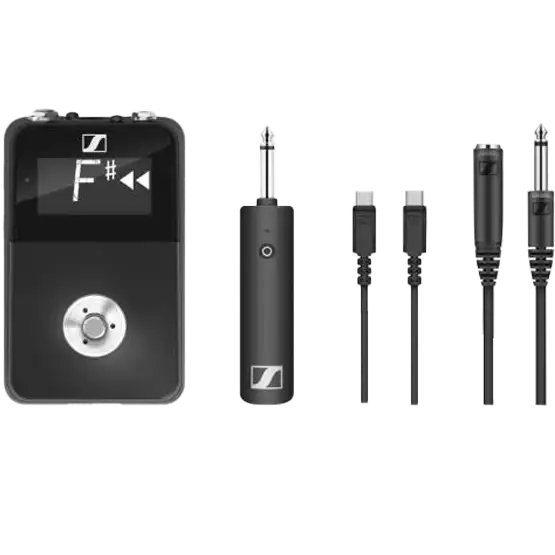
Sennheiser XSW-D Wireless Guitar System
Guitarsite Expert Opinion
The Sennheiser XSW-D is a user-friendly wireless system designed for pedalboards. It features a one-touch auto connection feature that delivers reliable digital transmission within a 250-foot operating range.
Manufacturer: Sennheiser
We’re reader-supported. When you click product links on our site, we may earn an affiliate commission at no extra cost to you.
The XSW-D integrates Sennheiser’s reliable digital wireless technology into a compact stompbox-style receiver, streamlining integration with existing pedalboard setups.
Gone are the complexities of traditional wireless systems; this sennheiser wireless system features a one-touch connection process facilitated by its 2.4GHz digital transmission. This not only simplifies setup but also minimizes the risk of interference.
Beyond its core function as a receiver, the XSW-D boasts a high-quality, built-in digital tuner complete with a front-panel LCD display. This space-saving feature eliminates the need for a dedicated tuning pedal on your board, freeing up valuable real estate.
The included miniature lavalier transmitter provides a comfortable and discreet option for wireless guitar connection.
With a 250-foot operating range and up to five hours of operation on a single charge, the transmitter delivers reliable performance for most stage applications.
Sennheiser thoughtfully includes an extension cable, providing the flexibility to clip the transmitter to your strap or belt for optimal placement.
For added versatility, the XSW-D receiver features multiple output options, including an XLR output for direct connection to a PA system.
Pros:
- Sennheiser level sound clarity in a compact pedal form factor, one-button setup.
Cons:
- Limited control over frequency use can be an issue when dealing with multiple wireless systems.
Transmitter: XSW-D 6.3mm (1/4”) Transmitter | |
|---|---|
Battery: Rechargeable Lithium Ion Batteries (Up to 8 Hours)
| Guitar Cable: Bug-Type and Extension cable 6.3mm (1/4”)
|
Dimensions: 4.8″ x 0.9″ x 1.1″
| Weight: Not Specified. |
Receiver: XSW-D Pedalboard Receiver | |
|---|---|
Antenna: Internal
| Operating Range: 250 ft. Line-of-Sight
|
Frequency Range: 2,400 – 2,483.5MHz
| Frequency Response: 10 – 18,000 Hz
|
Rackmount Version: N/A
| Output: 1 x XLR, 1 x 1/4″
|
Dimensions: 5.1″ x 3.2″ x 2″
| Weight: Not Specified. |
Features: Built-in Tuner, Extension Cable for Transmitter | |
Line 6 Relay G10S
Best Multi Effect Pedal (Overall)
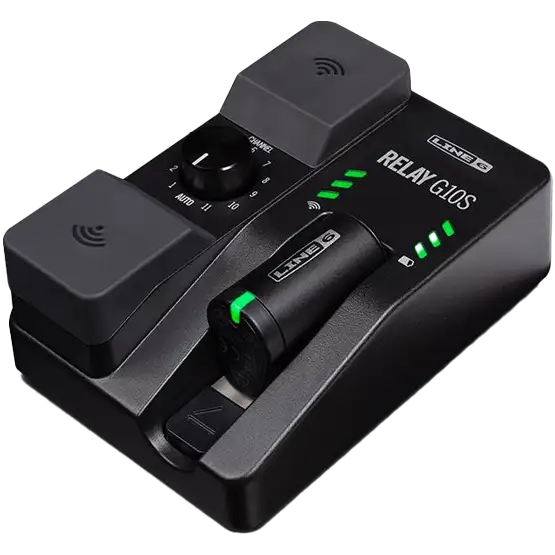
Line 6 Relay G10S
Guitarsite Expert Opinion
Line 6’s Relay G10S offers a simple and affordable wireless solution for guitarists. This compact, stompbox-sized receiver integrates seamlessly with pedalboards and features plug-and-play operation with automatic channel selection, making it a great choice for musicians seeking a hassle-free way to ditch the cable.
Manufacturer: Line 6
We’re reader-supported. When you click product links on our site, we may earn an affiliate commission at no extra cost to you.
The Line 6 Relay G10S system prioritizes simplicity and ease of use, making it a great choice if you’re seeking a cable-free experience without extensive configuration.
The G10S features a compact, stompbox-sized receiver that integrates seamlessly with existing pedalboard setups.
Unlike some wireless systems that require complex menu navigation, the G10S boasts a plug-and-play design with automatic channel selection. This streamlined approach minimizes setup time and ensures a frustration-free experience, even for less technically inclined musicians.
The downside to its streamlined design is limited control over the bandwidth, which can be an issue when working with multiple wireless systems.
Operating range is a bit limited at 130 feet, but it should be more than enough for a reasonably sized stage.
All in all, the G10S is a good, hassle-free, and affordable option for practice or live performance.
Pros:
- Affordable, intuitive, and easy to integrate into existing guitar rigs.
Cons:
- Limited control options
Specifications: | |
|---|---|
Processor: 450MHz Dual Core SHARC DSP Processor & professional-quality HX® | Presets: 1024 presets |
Effects Models: 273 total (Distortion, EQ, Dynamic, Reverb, Modulation, Delay, Pitch/Synth, Filter, Wah, Volume/Pan) | Amp Models: 106 guitars and bass |
Speaker/Cabinet Models: 80 single, dual, and legacy | Looper: 30sec (stereo) and 60sec (mono) |
Editing: Knobs, footswitches, pedal, and HX Edit app Helix Native Plugin Software | Impulse Response: 1024-2048-sample IRs. Load and store up to 128 custom or third-party IRs. |
Connectivity: EXP 2 and 3, EXT AMP 1/2, CV/Expression Out, GUITAR IN, AUX IN, MIC IN, SENDS/RETURNS 1-4, Ground Lift Switch, XLR OUT, 1/4″ OUT, PHONES Out, VARIAX Input, MIDI IN, OUT/THRU, S/PDIF IN/OUT, AES/EBU, L6 LINK, USB audio interface, AC In | Weight: 14.6 lbs |
Xvive Audio U2 Bug Type Wireless Guitar System
Best User-Friendly
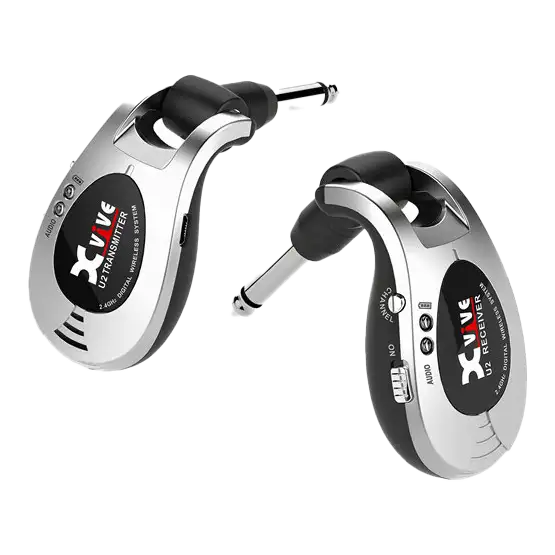
Xvive Audio U2 Bug Type Wireless Guitar System
Guitarsite Expert Opinion
The Xvive U2 easily stands out with its bug-type transmitter and receiver. It plugs directly into your instrument and rig, eliminating the need for a bulky bodypack and cable. This design prioritizes portability and ease of use, making it a great hassle-free way to go wireless without breaking the bank.
Manufacturer: Xvive
We’re reader-supported. When you click product links on our site, we may earn an affiliate commission at no extra cost to you.
Unlike traditional wireless systems that utilize a bulky bodypack transmitter, the Xvive U2 features a compact, bug-type transmitter that plugs directly into your guitar’s input jack.
This design minimizes footprint on your instrument and eliminates the need for cumbersome cables or straps, providing a comfortable and unrestricted playing experience. The receiver also shares the same compact profile, which makes the whole system easy to carry around and store.
Furthermore, the Xvive U2 boasts a user-friendly design with a single button for pairing the transmitter and receiver. This streamlined approach makes it a great choice for guitarists who prioritize ease of use and a cable-free experience without extensive configuration.
Given its small profile, the operation range is shorter at 70 feet (21 meters).
The Xvive U2 utilizes a 2.4GHz digital transmission format, which makes connection easy, but prone to being disrupted by powerful wireless devices like WiFi routers.
Still, with its simplicity and compact design, the Xvive is a much more practical and cost effective choice for those who don’t really play in big production setups and giant stages.
If you want to try playing wirelessly without shelling too much money, then the Xvive U2 is a must.
Pros:
- Super compact and portable. Easy connection setup.
Cons:
- Shorter range and frequency control.
Specifications: | |
|---|---|
Processor: 450MHz Dual Core SHARC DSP Processor & professional-quality HX® | Presets: 1024 presets |
Effects Models: 220 total (Distortion, EQ, Dynamic, Reverb, Modulation, Delay, Pitch/Synth, Filter, wah, volume/pan) | Amp Models: 80 guitars and bass |
Speaker/Cabinet Models: 40 single, dual, and legacy | Looper: 30sec (stereo) and 60sec (mono) |
Editing: Knobs, footswitches, pedal, and HX Edit app Helix Native Plugin Software | Impulse Response: 1024-2048-sample IRs. Load and store up to 128 custom or third-party IR. |
Connectivity: EXP PEDAL 2/EXT AMP, GUITAR IN, SENDS/RETURNS 1-2, Ground Lift Switch, XLR OUT, 1/4″ OUT, PHONES Out, VARIAX Input, AES/EBU, L6 LINK, MIDI IN, OUT/THRU, USB, AC In. | Weight: 12.5 lbs |
Shure BLX14R Guitar Wireless System
Best Multi Effect Pedal (Overall)
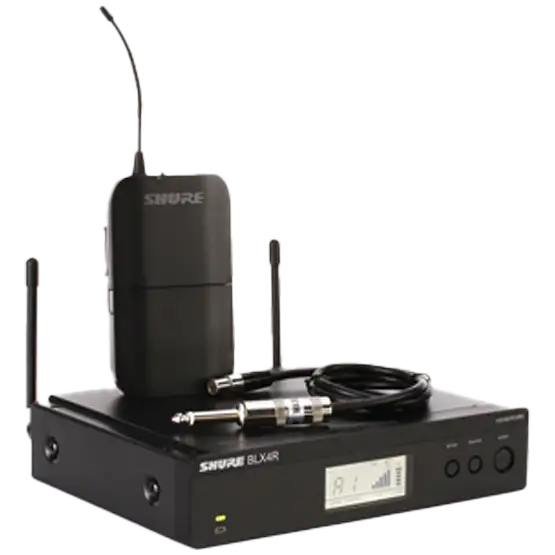
Shure BLX14R Guitar Wireless System
Guitarsite Expert Opinion
Backed by Shure’s undeniable reputation in building quality wireless microphones, the Shure BLX14R is a professional wireless system that offers the same rock-solid build and fidelity for guitars and other instruments.
Manufacturer: Shure
We’re reader-supported. When you click product links on our site, we may earn an affiliate commission at no extra cost to you.
Gone are the days of complicated setups because this one comes with QuickScan technology, automatically assigning the best available UHF frequencies to your transmitter and receiver.
And more importantly, you are getting the same signal and physical reliability as other Shure products.
This wireless system has minimal features, making operation straightforward.
Two buttons let you set the group and channel, along with the main power button. The BLX transmitter is just as simple, with a simple power switch, increasing efficiency and allowing it to run for up to 14 hours on two AA batteries.
The receiver is designed to be compatible with Shure’s many other wireless transmitters, including microphones and body packs.
If you’re looking for a practical and reliable wireless guitar system with big brand backing, the BLX14R may be the one you need.
Pros:
- Affordable and straightforward wireless system with up to 14 hours of battery life.
Cons:
- Does not have any extra features.
Transmitter: BLX1 Bodypack | |
|---|---|
Battery: 2 X AA (Up to 14 Hours)
| Guitar Cable: WA302 (TA4F to 1/4″)
|
Dimensions: 4.3″ x 2.51″ x 0.82″
| Weight: 0.16 lbs |
Receiver: BLX4R | |
|---|---|
Antenna: Fixed
| Operating Range: 300 ft. Line of Sight
|
Frequency Range: 512 – 542 mHz
| Frequency Response: 50Hz-15kHz
|
Output: 1 x XLR, 1 x 1/4″
| Dimensions: 1.65″ x 7.8″ x 6.42″
|
Weight: 2.2 lbs | |
Things to Consider When Buying a Guitar Wireless System
Digital Wireless systems
Digital guitar wireless systems work by converting audio signal into digital data. This data is then transmitted securely via the same wireless connection that WiFi routers use.
Since the signals are coded, digital wireless systems are more resistant to interference. These wireless systems are also smarter and use frequencies more efficiently, so some can even automate channel/frequency detection and allocation when working with multiple wireless devices.
They have become the industry standard because of their interference-free operation, versatility, and transparency. Note that there can be issues when performing in a location with too many devices using the same frequencies.
Another downside is that they are a bit more expensive for now, but even this will change as production volumes increase.
Analog Guitar Wireless Systems
are still used by many musicians thanks to their practicality and accessibility. Older systems run on VHF radio frequencies that range from 30MHz to 300MHz, the same frequencies used by radio and TV broadcasts. These are no longer recommended because the frequencies are susceptible to interference, but they are still viable when frequency use is not an issue. The most common and more accessible systems use UHF TV frequencies that range from 300 MHz to 3GHz. These are more reliable but are limited by the various UHF frequency regulations that vary from place to place.
Frequency Use
Wireless systems utilize radio frequencies to send sound data from the transmitter to the receiver. Other radio-emitting devices like TV, microwave ovens, and radio communication devices also use some of these frequencies, so it is important to ensure frequency compatibility when using multiple wireless systems in one venue.
Today’s wireless systems allow for more efficient use of frequencies and can even automatically choose free frequencies for you. If you want an analog system, make sure it will not use the same frequency as other musicians in your group. This is why manufacturers build wireless systems with specific “bands” to ensure that they operate in different frequencies when working with multiple systems.
The best guitar wireless systems featured here are all very reliable. Gone are the days when wireless systems were thought of as problematic. This is why you should watch for good guitar wireless system deals.
Sound Quality
Aside from reliable transmission, good transparent sound quality is also essential. The system’s frequency response is one of the indicators for this. Thankfully, most wireless guitar systems have a full frequency response of 20Hz to 20kHz. Most wireless systems also have good dynamic range.
While most guitarists want transparency, some prefer the warmth of an analog cable. This is why some manufacturers use DSP (digital signal processing) technology to mimic the response of a cable.
This cable tone simulator feature is perfect for those who feel wireless systems sound too clear.
Wireless Range
Wireless guitar systems have enough range to cover the biggest stages, but if you need more, you’ll want to look into this specification.
You won’t need ranges beyond 150 feet for most gigs, but you’ll have to remember that solid objects between the receiver and transmitter will shorten the range dramatically.
Form Factor
Many professionals prefer rack-mountable units because they can easily be secured into rack cabinets. If you don’t have a roadie or you don’t have rack gear, then consider those with smaller profiles for convenient storage and setup. If you still have space on your pedalboard, consider stompbox-style receivers so all your equipment is packed and set up in one place.
Wireless guitar systems are just that, wireless systems. They don’t magically make your guitar sound better or worse (at least the ones in this list), so don’t expect your tone to improve magically. They provide freedom of movement and reduced clutter, which can distinguish between a mediocre performance and an unforgettable one.
If you or your band want to go completely wireless, check out the Gearank guide to handheld wireless microphone systems. Gearank now also has a guide using the Gearank algorithm to find the highest-rated options: The Best Wireless Guitar Systems Under $500.
As always, please feel free to share your thoughts and any experiences, good or bad, you’ve had with various wireless systems in the comments below.
Alexander Briones
Lead Author and Researcher


18 thoughts on “The Best Wireless Guitar System Review”
I have multiple disabilities so a wireless system seem to make the most sense for me. I play guitar 1 handed, and that hand also needs to control my wheelchair. Wheelchairs and multiple cables do not get along–especially because I also have multiple vision. . I probably need 2 or 3 input output pairs so I don’t have to switch my output jack as well as my instruments in a performance. i want people to see they can still perform even when life is difficult. I will be playing at hospitals and nursing home so I wand to know if the wireless I choose might interfere with medical devices. So do your brainstorming. I just want info, no funds. If my story moves you donate to the charity of your choice.
oh, one guitar is a six string bass, another is a classical. i play 1-handed.
I’m biased (because I designed it and build it in the UK) but the Classic wireless definitely needs to be in your list. Check amazon.co.uk reviews or basschat or thefretboard or many other places. Why? It sounds fantastic and its automatic and continuous channel selection makes it the most reliable wireless in the digital range. 15 hour battery life and 200 ft open space range help too.
I have used various UHF systems on 6 string and bass guitar over the years and they were generally OK. I then bought the Smooth Hound Classic Digital system and it is the best I’ve ever used. I have lent it to other guitarists and they have all said it was excellent and would buy one. It’s only £149 as well. One of the things you need to check and which the reviews above didn’t go into detail on is the latency (the extra delay time that it takes the signal to reach your amp as caused by the unit) – the lower the latency the better. On the Classic system it is only 8 ms which is excellent. Also, as a bass player, I want a system that will transmit a signal from about 40 Hz (open E string), but on a 5 string bass with a B string, this is about 30 Hz; the Classic transmits from 10Hz so I’m covered for full range. I can’t recommend this unit enough especially at this price. And the service I got from Smooth Hound was exceptional, I needed one in a hurry and rang the owner of the company, he put one in the post that afternoon and I received it next morning in time for my gig that night! Get one, you will love it! I am not connected in any way to the company and don’t know anyone who works there, just a very pleased customer that wants other guitarists to benefit from good gear at a good price.
” I am not connected in any way to the company and don’t know anyone who works there, just a very pleased customer that wants other guitarists to benefit from good gear at a good price. ”
So why post anonymously?
To Sony:
Detailed Description (FTS) : Issue – Compared to a normal instrument cable, this unit produces a significant amount of noise when using the high gain channel of my EVH 5150 III 1×12 50W Combo amplifier. Comments – For now, it is back in the box, sitting on a shelf in my closet. I am really hopping that Sony will be able to resolve this issue.Summary – Please keep me informed about any software and firmware upgrades for this product. Thank you for your attention.
From Sony:
The ZTX-B01 body-pack transmitter should not be adding any noise, if it is set correctly. With the INPUT switch set to “INST”, and the ATT set to “0”, you should be getting a clean sound, as long as the AUDIO/MUTING indicator on the transmitter is lit green.
On the ZRX-C30 receiver you should also have a green RF and AUDIO indicator. Using the MAIN OUT of the receiver into your amp, in the SETUP menu, configure the “Cable Tone Generator” to simulate the sound quality of a wired cable connection length you would normally be using. This should be giving you a clean signal.
If after this setup, you are still having a problem with noise, you may have a problem that would require service. I have attached a service form if needed.
To Sony:
My apologies. Please let me clarify.
The body-pack transmitter is not adding noise.
The receiving unit is adding noise.
This is a new unit and I am using it correctly.
Compared to a normal instrument cable, this unit produces a significant amount of noise when using a high-gain amplifier.
I have seen posts by other musicians stating the same issue.
It is apparent to me that nobody at Sony has tried to test this unit in the manner stated in my first e-mail. And quite honestly, I can understand why. Not everyone uses a high-gain amplifier with the gain/distortion all of the way up. But, Sony should acknowledge that this style has become very popular with today’s younger guitarists. Myself, I am 48 and love to play old Van Halen.
If you would like, I would be happy to make a demonstration video.
I am really hoping that you will be the one to say to your boss, “Hey, we have a problem here.”
Hopefully followed by a pay increase for you!
Thank you very much for your attention.
Impression:
Very rude and have yet to respond.
Maybe I will make that video and post it on Youtube. 🙂
If you do make that video please post a follow-up here with a link to the video.
Why no mention of the Dutch stageClix digital wireless system? Now in it’s 3rd version, it works in the uncluttered 5.58G wi-fi band, and the “bug” transmitter has rechargeable batteries that are charged just by plugging into the receiver.
http://mtraudio.com/product/stageclix-jack-and-pack/
I’m interested in the line 6 G50
Just wondered if it still functions when bodies etc are in it’s line of sight
Or does it have to have a clear line with no obstacles in order for it to function
Will it drop out etc
Thx Dougie
You don’t need direct line of sight for any of the wireless systems above.
They’re designed to work with people moving around each other on stage.
The only time you might have a problem is if you had a wall of people wearing lead-lined suits crowded around the receiver.
Line 6 relay G55 is the absolute WORST !!! Unreliable, Dropouts etc. You name it. Never so dissatisfied with a product in my life. LINE6 SUX !!!
Yeah I have the G55 too and loved it at first then the dropouts started happening. It sounds perfect but it’s been unreliable for me, dropping out during gigs in front of hundreds of people. I think I might try Sennheiser next.
I’ve been using the Line 6 G50 for a couple years now and love the sound quality. I did A/B of it vs. cable vs. my Sennheiser G2 wireless. The G2 sucked the tone right out of my guitar, whereas the G50 was nearly indiscernible from the cable. Our other guitarist got a G30 and has been enjoying it as well. The G30 signal doesn’t seem to be as reliable, cutting out occasionally for no reason. My old bassist had the same problem with his G30 too. Sound is great though.
I really like the look and sound of that new Line 6 G50.
I’m going to save up and get that one next month!
I agree with “Anonymous” about the Carvin UX1000 system – got one and it’s very, very reliable. I’m in two bands – and two of our members both have Shure sytems, and sometimes they don’t work; most of the time it’s “sketchy” and you have to re-do the infrared sync; but when you’re a professional, you don’t do “sketchy”! But man do they make microphones!!! We got 5 SM57’s and 5 SM58’s – can’t get any better. Lead guitarist on band #1 used to have a Line 6 G30 by Line 6, then he swithced to a Nady MGT-16. He did a side-by-side comparison and the Nady was on top by a huge margin, even distance wise (yeah, we drove the car down a quarter mile or so down the road!). When it comes to channels, the Nady has more options to pick from that didn’t have interference (he lives in a area where there are quite a few antennas – they are made to look like “trees”). Another system that’s really great for the money – if it were not for the crazy options and menus (the reading requirement is outtadisworld!) – is the AKG WMS 450. It’s been changed to the WMS 470 guitar system but it’s the same thing. One caution – the battery life you get is only 6 hours on an alkaline, the Carvin runs on two AA’s and goes for 30 hours. Forgot about this one, and ran out of juice mid song! So, change it after every two shows, you’re good to go!
I have a Carvin UX1000-BP wireless guitar system and it is by far the best unit out there. Line 6 makes a big deal about two things – companding and cable tone selection. But the fact is, “companding” is used to remove interference (generally from AC and/or DC current – and digital is as much susceptible to this interference as is analog)! Ever watch your HDTV and all of a sudden it becomes pixelated due to interference? However, analog systems have less “noise” – and can actually still differentiate between signals. That analog wave is going to bounce off anything and everything (walls and even the atmosphere) and can still be processed; whereas digital is purely line-of-sight and interference can come from objects and other units, as well. As for “cable tone” – that is normally called “EQ”. Those selectors are given so that you can tweak your sound – all marketing mumbo-jumbo. What this means is, you are NOT getting the actual sound of the guitar or bass, and have to “select” the cable – yeah, okay. In any case, for the money – and though it’s really a Nady unit in disguise – the Carvin UX1000-BP is stellar. Don’t know who Nady is? Just some guy who was THE FIRST to use wireless tech for musicians – even won some Grammy’s on the side. So, as a general test for sound – hook up all your wireless units to an acoustic guitar and listen. If it sounds like an untethered (no cable attached) guitar – BUY IT.
Hahaha
“However, analog systems have less “noise”…whereas digital is purely line of sight…”
Its great to see all these Guitar wireless systems. The Line 6 really has far range doesnt it? its good to see even though its wireless it doesnt loose its quality in sound transmition. Wireless is defiantely the way to go if those havent gone that way yet. Thanks for the post.